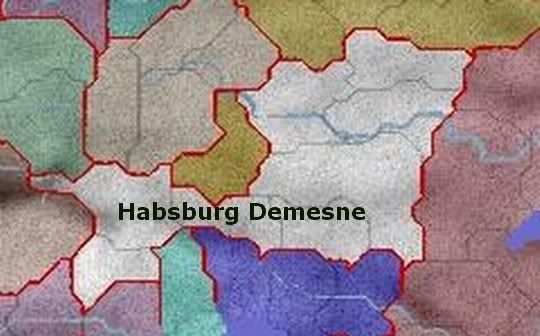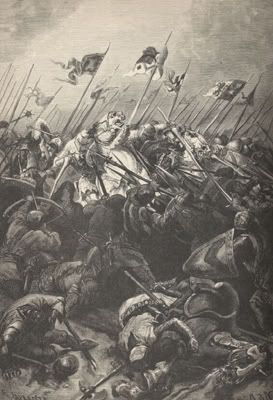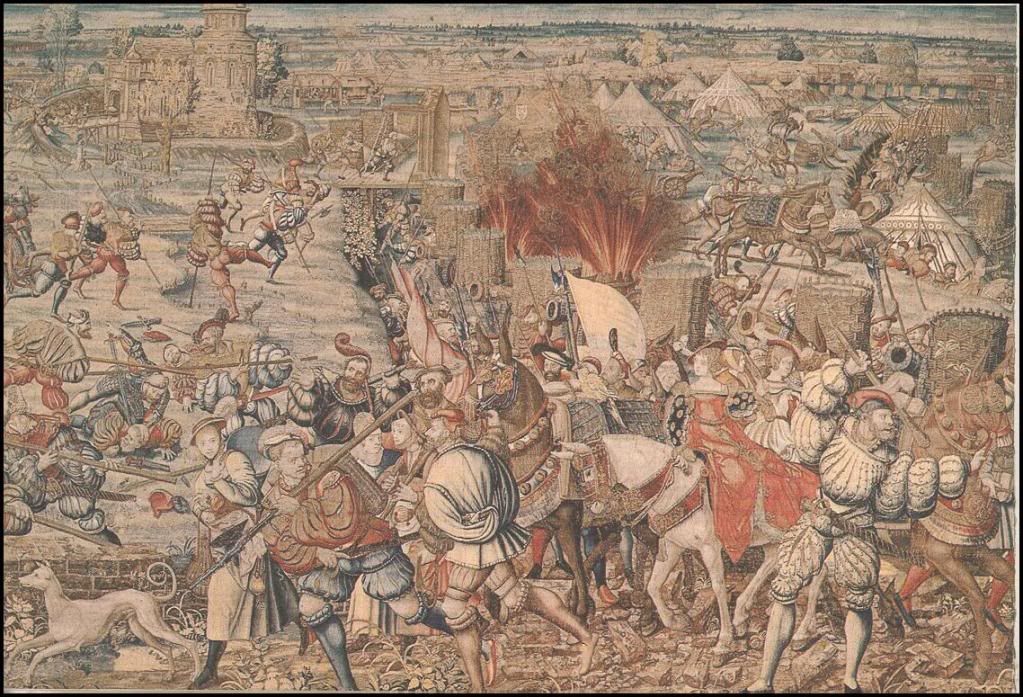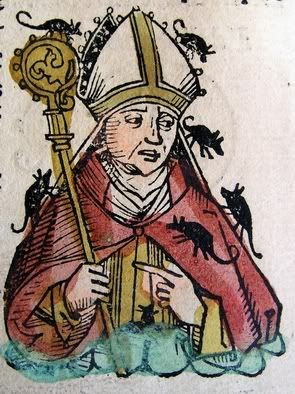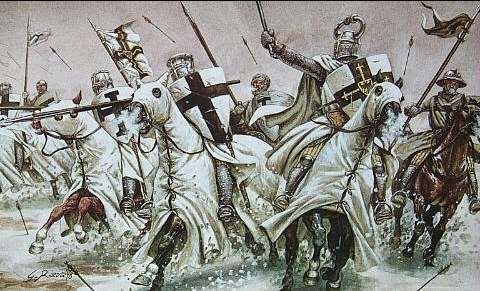Albrecht IV, The Soldier
Lived: 1377-1417
Head of the House of Habsburg: 1395-1417
Duke of Austria: 1395-1398
Archduke of Austria: 1398-1417
Albrecht IV was the last of the great Habsburg Medieval warrior-Kings. After a life spent in the saddle Albrecht left his dynasty in a position of great power. By centralising the Habsburg realm into a single Archduchy, whilst it had previously been several separate Duchies, coupled with the defeat of external threats to his realm Albrecht ensured his nation’s place in the sun as the supreme power in Imperial politics.
Immediately after his Ducal coronation in Vienna Albrecht was forced to assemble his army in order to confront the forces of Leopold, Duke of Tyrol and Styria. Albrecht had made it no secret that he intended to further reduce the powers of the nobility within Austria and so Leopold’s army was wrought by the forces of reaction. The first battle of the Leopoldine War took place just to the West of Albrecht’s capital near the city of Linz.
In truth the Battle of Linz was the best opportunity the rebels ever had of defeating Albrecht. Leopold’s army featured some 4,500 knights and around 10,000 peasant levies. Meanwhile Albrecht could only muster around 2,000 knights but had 5,000 well trained professional pikemen.
The story of the battle will be familiar to anyone who has studied any of the battles that took place in the period when these pike regiments began to emerge across Europe. Seeing perceived weakness in the loyalist line Leopold attempted to charge down Albrecht’s infantry and win a quick victory. Instead his cavalry faced utter annihilation. Around 1/3 of the rebel knights were killed in Leopold’s bold but terribly miscalculated charge. Seeing the nobility fleeing the scene the peasant levies quickly routed alongside them and Leopold’s rebellion seemed to be broken.
Over the course of the next two years Albrecht slowly pursued Leopold across southern Austria and into the Alps of the Tyrol. Here Leopold was able to gather up a small army in his core territories. Following Linz most of the nobles loyal to Leopold had abandoned him and by now he had barely 800 knights whilst his number of peasant levies had dwindled to just 3 or 4 thousand. Meanwhile Albrecht had not only recouped all his, admittedly negligible, losses from Linz but had also called up as many as 7,000 peasant levies. So as Albrecht closed in on Leopold in the Summer of 1397 one could be forgiven for thinking that the war was surely at an end. However, just as Leopold was considering surrender, the Milanese (Italy’s main military force) entered the conflict with some 6,000 trained soldiers.
Over the course of 1397 and 1398 the two armies would frequently engage but there was never a decisive victory for either side. Yet after Milan’s Tuscan cities rose up in rebellion in late 1398 the Duke of Milan sought terms. The Milanese agreed to abandon Leopold and end all support to him and his claim in return for a small sum of money paid by Vienna to the Italian Duchy. Within a few weeks of the treaty Albrecht met the tattered remnants of the Leopoldine rebellion in battle and crushed them, conveniently killing Leopold in the process. The rebellion was over, the Leopoldine line was ended.
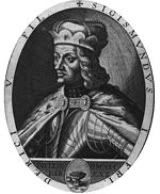
With Leopold and many other powerful landowners within his realm now dead Albrecht seized the chance to greatly increase his power within the realm. As a symbol of his increased authority he made himself Archduke of Austria and therefore above the small Dukes within Austria but also above many of the petty Princes of the Empire. Albrecht saw this act as some sort of compensation for Austria who had been denied an electoral seat by the Golden Bull, only a few decades before.

Albrecht’s first major move on the international stage was the division of Bohemia in 1405. The Duchy of Silesia, long dependent upon Bohemia, rose up in an Austrian sponsored rebellion in 1403 and shortly later was recognised as fully independent from the Bohemian Kingdom. Then in 1405 Bohemia declared war on the Duchy in hopes of reclaiming it. This move resulted in a counter invasion from Poland, Hungary (the Emperor) and Austria. Within a few months Bohemia had been overrun and was forced to sign a disastrous peace. Hungary annexed Moravia, Silesia’s independence had to be fully recognised by all parties, the cultural melting pot of Upper Silesia went to Poland whilst the German speaking highlands around the Sudeten Mountains were annexed by Austria. This left Bohemia with nought but a small fief based around Prague, and even this was lost when Austria invaded for a second time in 1410.
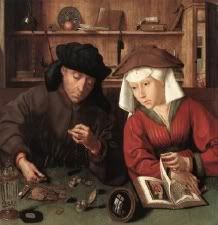
On December 14th 1410 an often overlooked, but extremely important, decree was passed by Albrecht that led to the foundation of the Bank of Vienna. A national bank for the House of Habsburg. Essentially Albrecht hoped to use the bank to raise funds was a massive expansion of the Austrian military and the foundation of a professional army. Savers were offered a very secure investment with a relatively good rate of return in exchange for keeping their money invested for a period of ten years.

Albrecht needed all the funds he could get for in September 1411, following a trading dispute with the Venetians, Austria found herself alone in a war against a coalition of Italian states. The Austro-Italian Wars had begun. Albrecht was extremely fortunate in that the Venetian army had only recently been destroyed in an ill fated attempt to invaded Hungarian Dalmatia so the Austrian army quickly overran Northern Italy. Even the Genoese proved incapable of stopping Albrecht as an army of 6,000 German knights utterly crushed the Genoese at Parma in late 1412. It was not until 1414, at the very end of the war, that the Italians finally managed to assemble a reasonably large army and this only with Albrecht bearing down upon Naples.
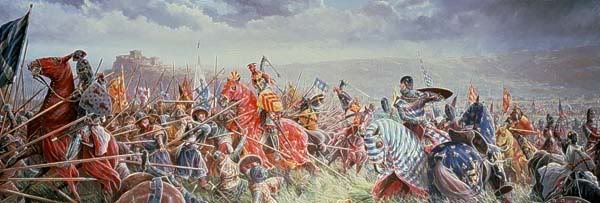
By the time he had reached Naples Albrecht’s infantry were tired and weak following 3 years of attacking various Italian bastions and walled cities. Believing that he could secure a victory similar to the one he won against the Genoese at Parma Albrecht led out his heavy cavalry in a direct charge on the Italian lines. Albrecht fell for his own trick as the Italians brought forward their pikemen and crushed the German charge. Albrecht barely escaped with his life, losing his mount and suffering several grave injuries. Hoping to rescue the situation the Archduke sent in his numerically superior infantry. Yet, as had been previously mentioned, the Austrian infantry were exhausted whilst the Italians were fresh and awash with confidence following their victory over the Austrian cavalry. The infantry charge was disorganised and lethargic; the Italians easily forced them back with neither army facing heavy causalities. With that the Austrian army withdrew from the field, Naples was saved.

With the way to Naples shut but most of Northern Italy in his hands Albrecht was eager to secure a peace deal. Each and every Italian belligerent was forced to pay a small tribute to Albrecht, Aquileia ceded everything outside of its capital at Friuli and Venice gave up the cities of Treviso and Verona. Austria’s foothold on Italy was secured, but much more significantly the Habsburgs had won themselves a coastline and access to the world far beyond their immediate neighbours.
Although the war had been very beneficial to his state it was fatal fro Albrecht. The wounds he sustained outside Naples would leave him bed bound for the last few years of his life. Worse still it prevented him from producing a male heir. Desperate to avoid his realm passing to one from outside the Habsburg dynasty Albrecht chose to abandon Salic Law, allowing his daughter and only child Maria Theresa to inherit the throne. This move caused a great uproar within Austria and around Europe but in the end no one was willing to oppose Maria Theresa’s succession in 1417.

 )
)



